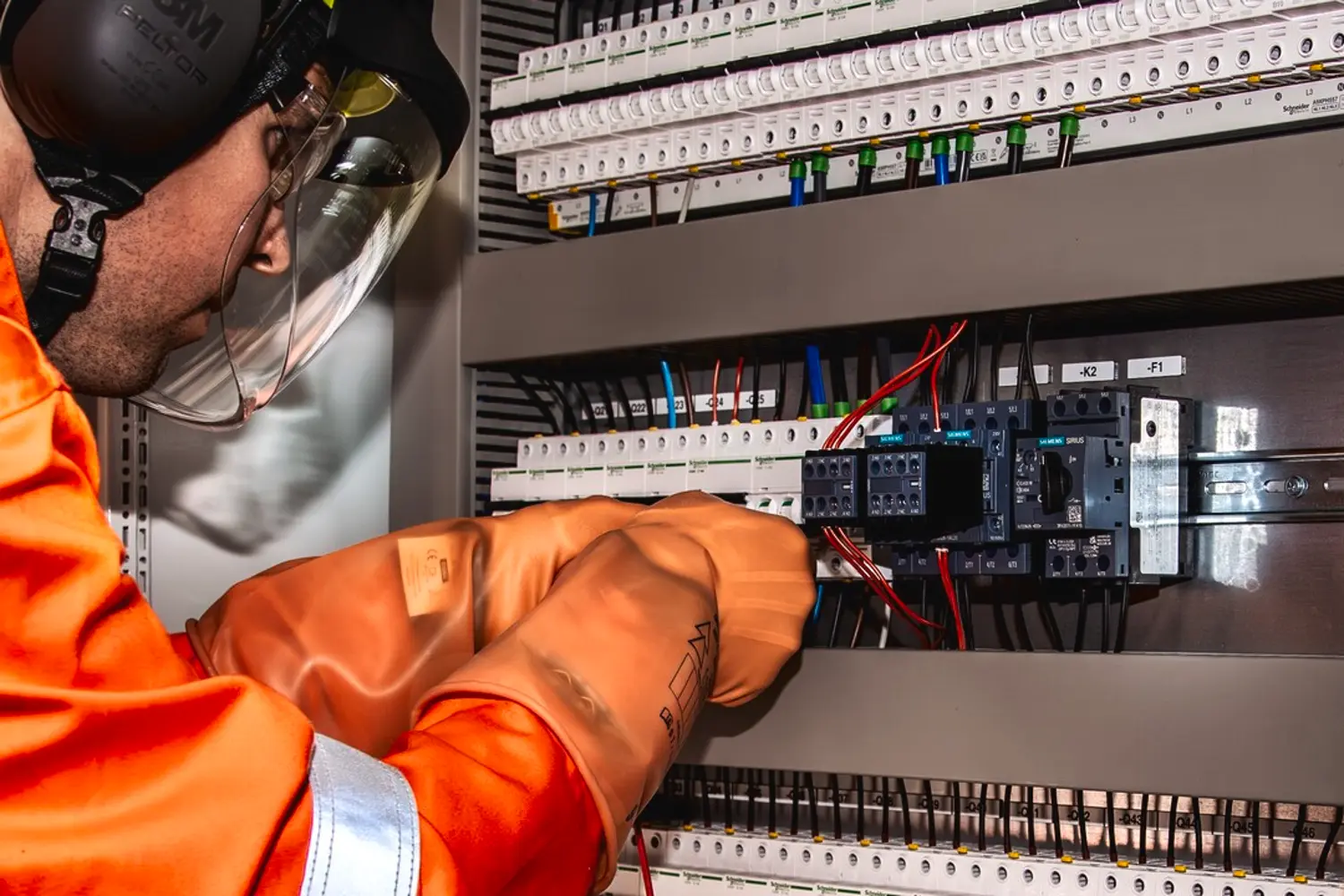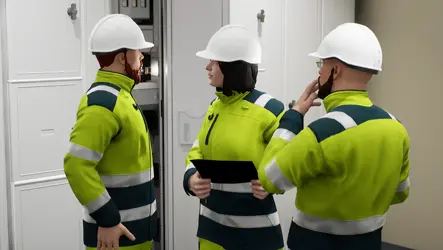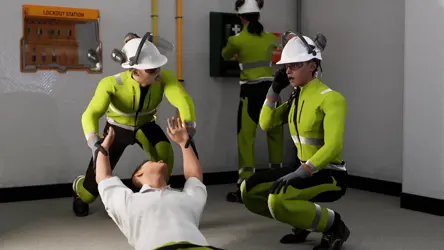Live Working – Low Voltage
Advanced course for those who work on live low voltage systems. The course has a practical approach and focus on the correct use of protective equipment.


Contact us if you are interested in purchasing this classroom course, and we will do our best to help you!
Contact usInternal corporate courses
We can hold courses at the customers premises on our own equipment and facilities, or in our specially adapted trailer tailored for practical and real exercises.
When we are holding the course at an external location, it will be required that you have access to an electrical switchboard for practical practice. When practical exercise in live working (AUS) two and two work together. One is AFA and the other performer, change’s role so that everyone gets the job done as AUS.
- Planning the work
- Implementation
- Completion of the work
Everyone must wear long -sleeved protective clothing in flame resistant material and visor and electric insulating gloves. Insulating covering and insulating tools must be available.
The goal
After completing the training, the participants shall be able to perform live work on low voltage (AUS).
The target group
Personnel performing live work on low voltage installations (AUS).
The topics covered
- Planning of work (FSE §10)
- Information about the facility
- Risk assessment
- Choice of working method (AUS)
- Procedures
- Work permits
- Safety at the worksite (FSE §12)
- Safety Supervisor
- Work under tension (FSE §16)
- Establishment of security barriers
- PPE
- Facility protection
- Practical exercise (AUS)
- Planning the work
- When working
- Completion of the work
The course will meet the requirement described in § 16 of the FSE regulation.
References
§ 16. Live working (AUS) Live working may only be conducted by those with sufficient training in live working, and the work must follow approved methods and applicable work procedures. Before live working may commence, any possible fire and explosions hazards must be eliminated.
Re § 16 Live working For live working, two safety barriers are always required. When working on objects that are located inside the live-working zone, including direct work on live installation parts (known as live working), additional training is required. Training must be documented. The requirement that work must follow relevant work procedures implies the development of a procedure for each work task, based on the selected working method.
Technical information
Course manual
Yes, a course manual is included for this course.
We take pride in delivering up-to-date courses at all times and never shy away from thinking innovatively in all fields. You and your employees will always be met by highly skilled instructors who have field experience and have faced the challenges firsthand. It is a goal that everyone gets the most out of the courses they attend. Therefore, we ensure that our instructors stay professionally updated through studies, training, and close collaboration with authorities and industry organizations. This creates an environment focused on learning and safety.
Every day, we also share our knowledge with up to 100,000 people in Trainor's professional forum. Here, professionals come to ask questions or read answers about all kinds of issues within electricity, automation, Ex, and regulations.
Go to the forumRelated courses
With the Trainor app, you can take eLearning courses directly from your mobile or tablet, even if you don't have coverage. The app is free, and you log in with the same username and password you usually use on trainor.no.



